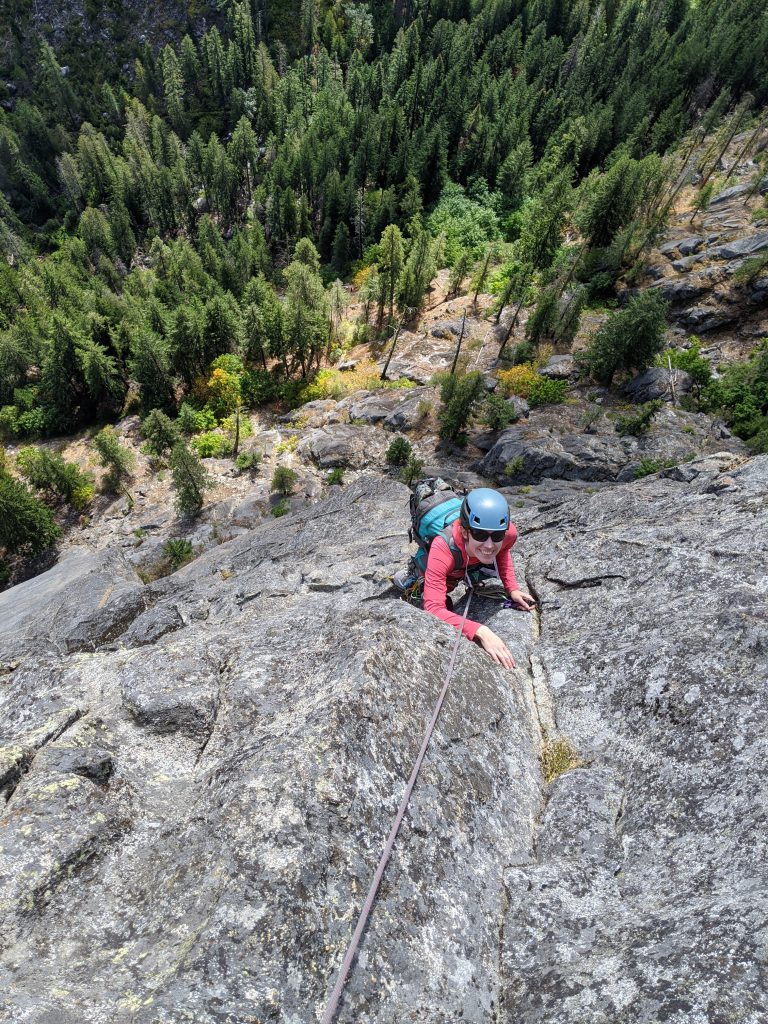Gear
- 60m rope
- Doubles of #0.3-1, and a single #0.2 and single #2… I actually meant to bring doubles of #2 and a single #3, but I’m glad I didn’t, this gear was perfect!! No reason to bring those other two cams!
- Nuts with doubles of two of the medium-small ones
- Radios! Useful! Basically each pitch ends up out of sight and difficult to communicate with the river below.
Approach
We started hiking at 5:37 AM in the dark and arrived at the base where we ditch packs at 7:07 AM, so exactly an hour and a half approach.
The tree that marks the start of P1 is pretty easy to spot. We first scrambled on class 3/4 ledges, zig zagging a bit, until we got into a gully left and below the tree.
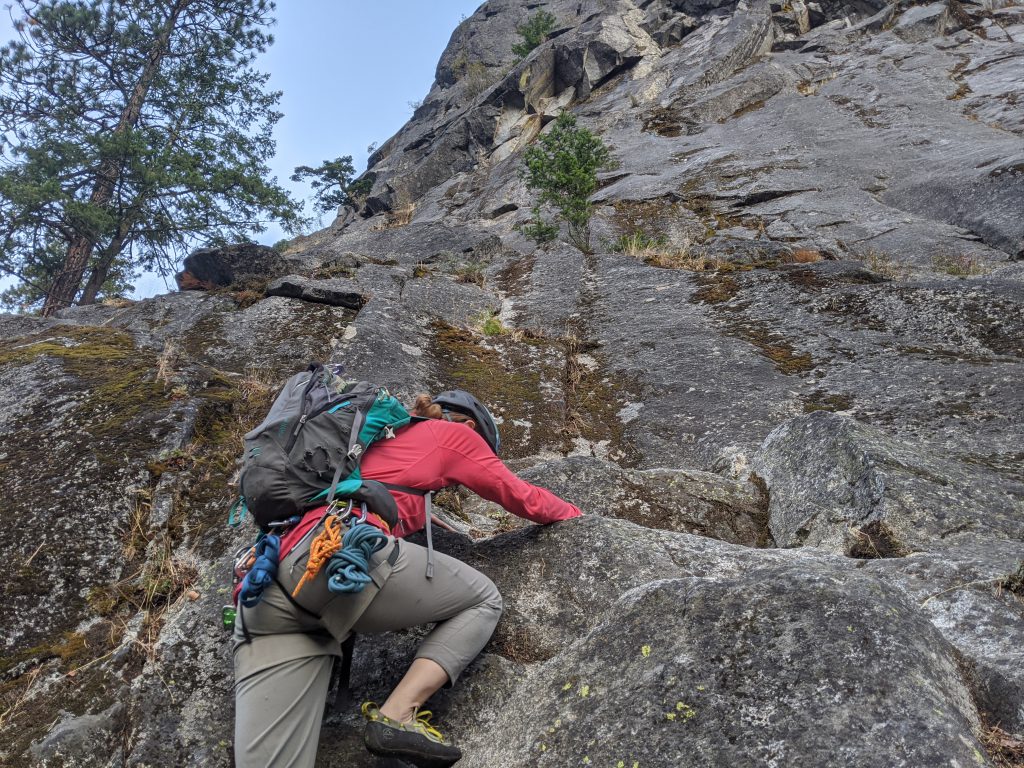
The gully just below the tree has a class 5 move that I felt uncomfortable doing unroped (slabby step across). I was glad we roped up, there were a couple non-4th class moves in addition to that one.

We started P1 at 8:00, but then after an unexpected emergency bathroom break, we re-started P1 at 8:20 AM.
Pitch 1 – ~150′
The “chimney”/”roof” section on P1 was kinda tricky. I placed a good small cam and also clipped the piton below it, but having my backpack on made the move tougher. It took me several attempts (but no hangs) till I figured out a confident way to go for the move.
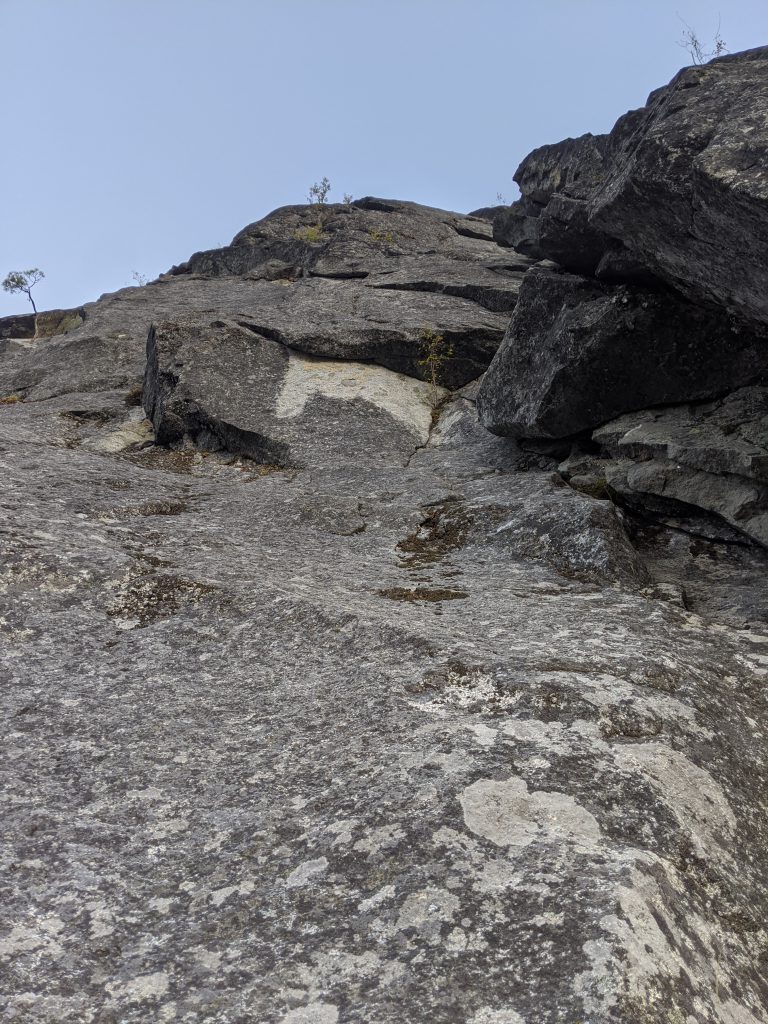
After getting above the roof and on top the ledge, I went up the right side of the two vertical options. The leanback also looked travelled and I’ve seen photos where people went up it, but I opted for what looked easiest.
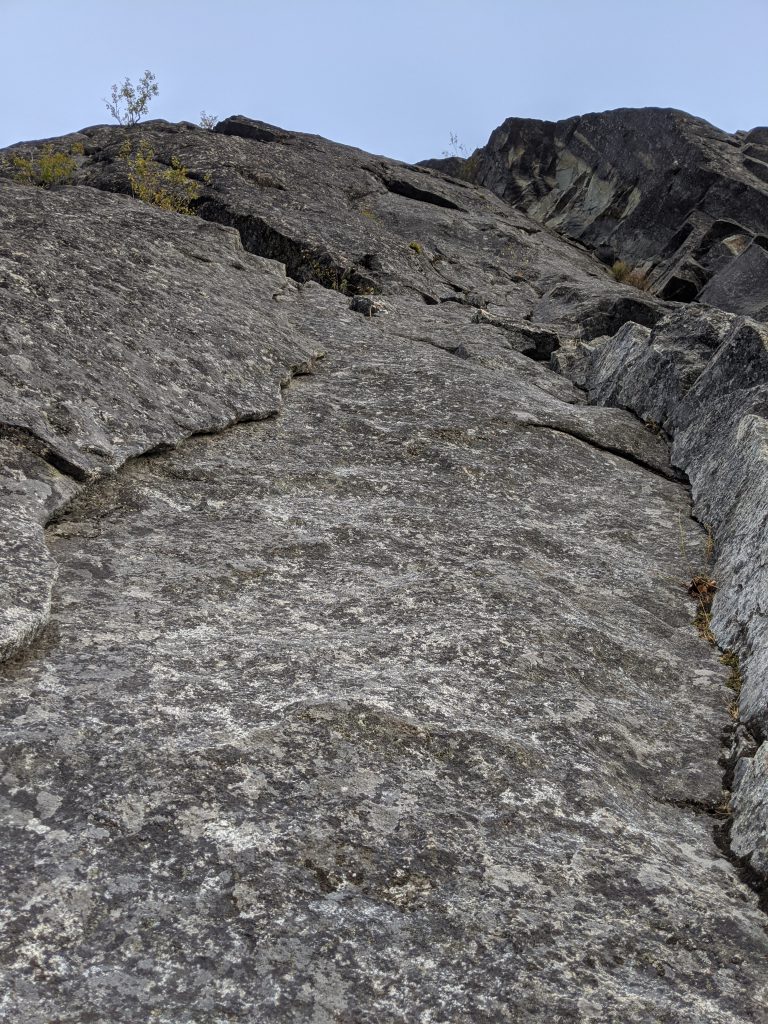
I belayed off a rock horn that also had some bail gear on it.

Just above the roof 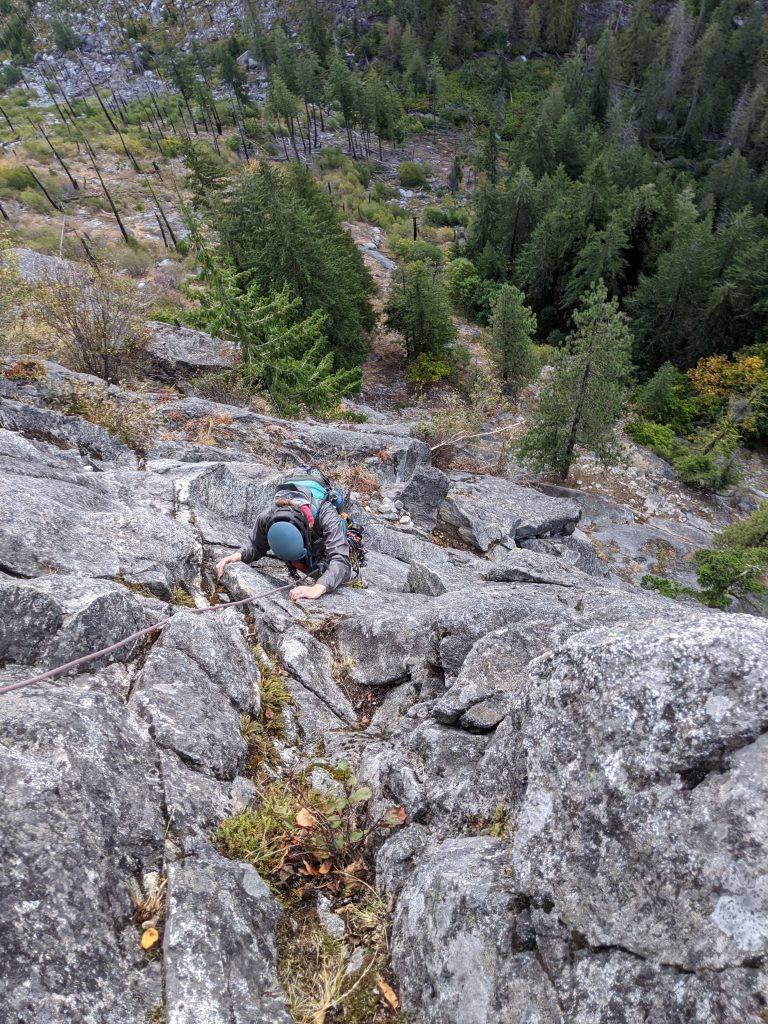
Traverse moves to belay 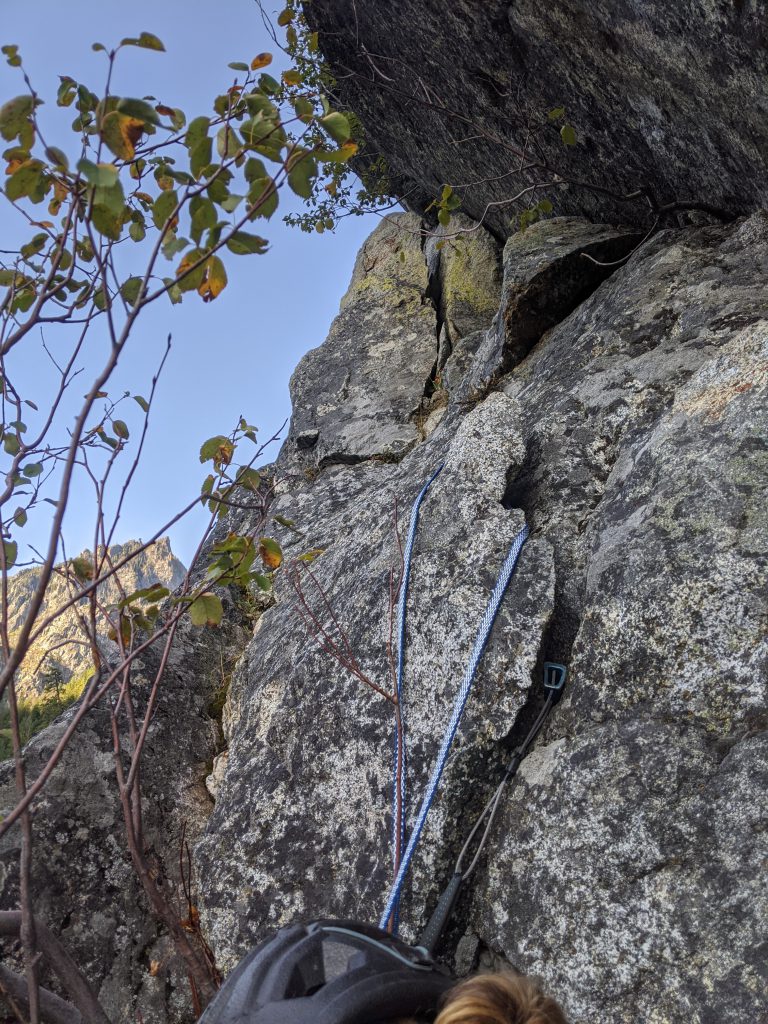
The belay
Pitch 2 – 100′
The traverse over was really easy, there’s one final move of the traverse that’s a bit tricky. It all protects pretty well by rock horns or slinging trees.
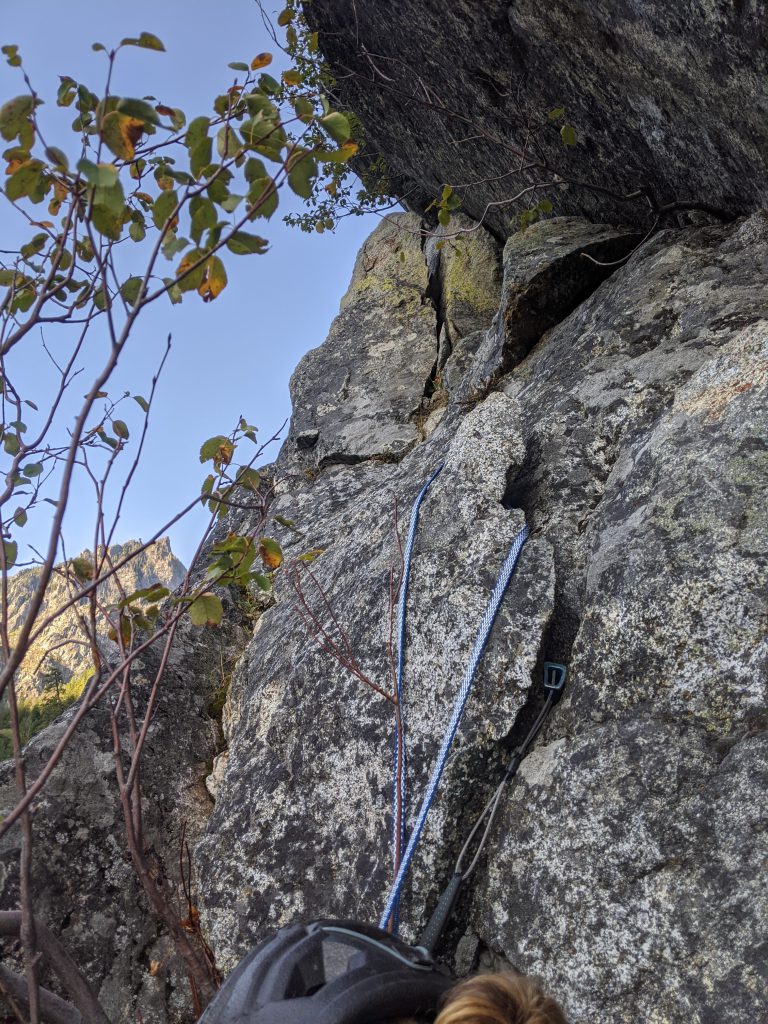
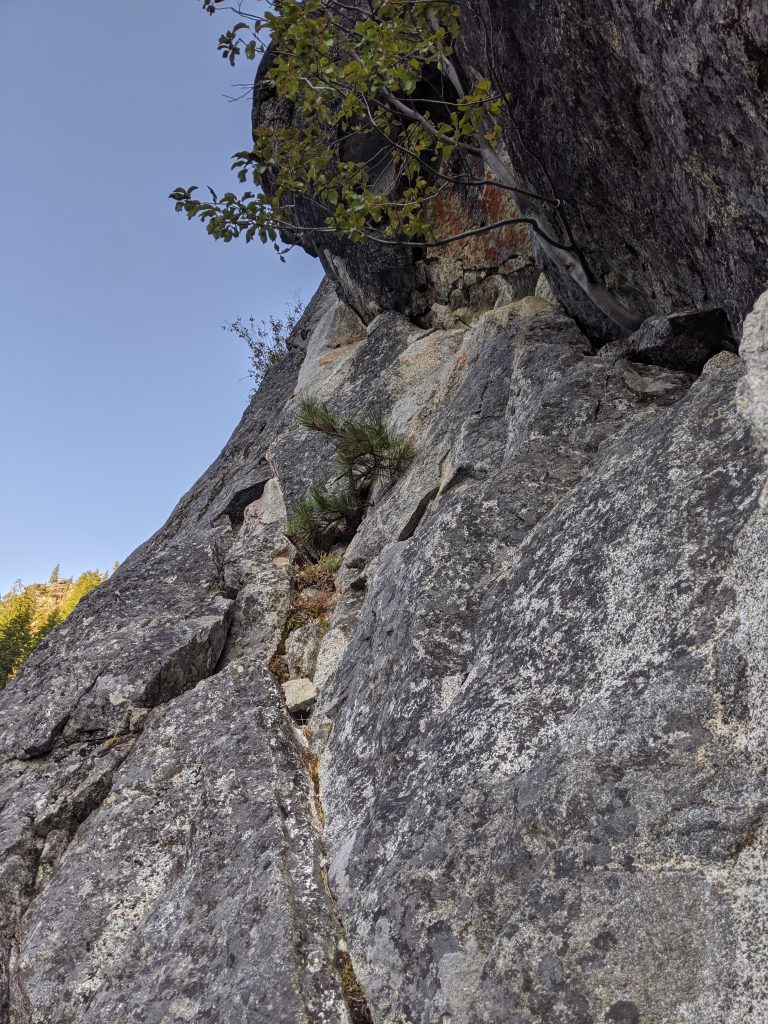
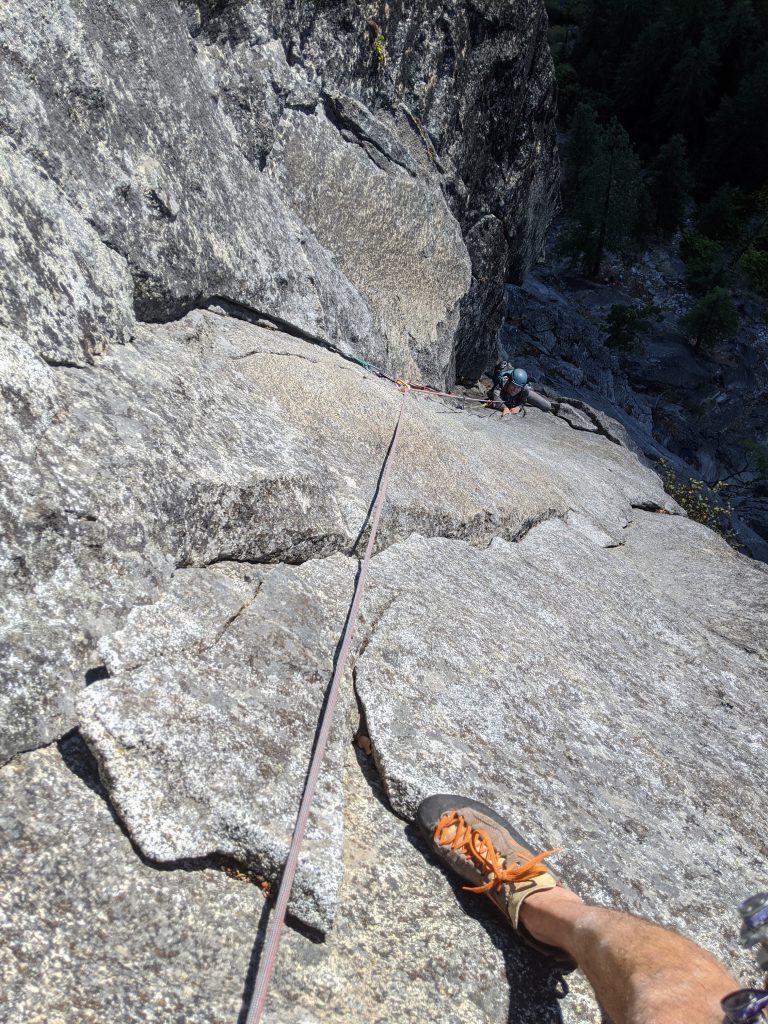
Pitch 3 – 180′
This pitch starts off with the “scary slab”, which actually wasn’t too bad. I put a nut in before the exposed step over, but then I got my foot wedged in the crack and spent a while trying to get it out. You have to climb a bit above the piece but it still felt better than Prusik Peak’s slab and better than the slab on Southwest Rib of SEWS. The rest of the pitch was mostly all slabby, but overall protected pretty well. I probably had a piece every 10 feet, I think I used 4 nuts.
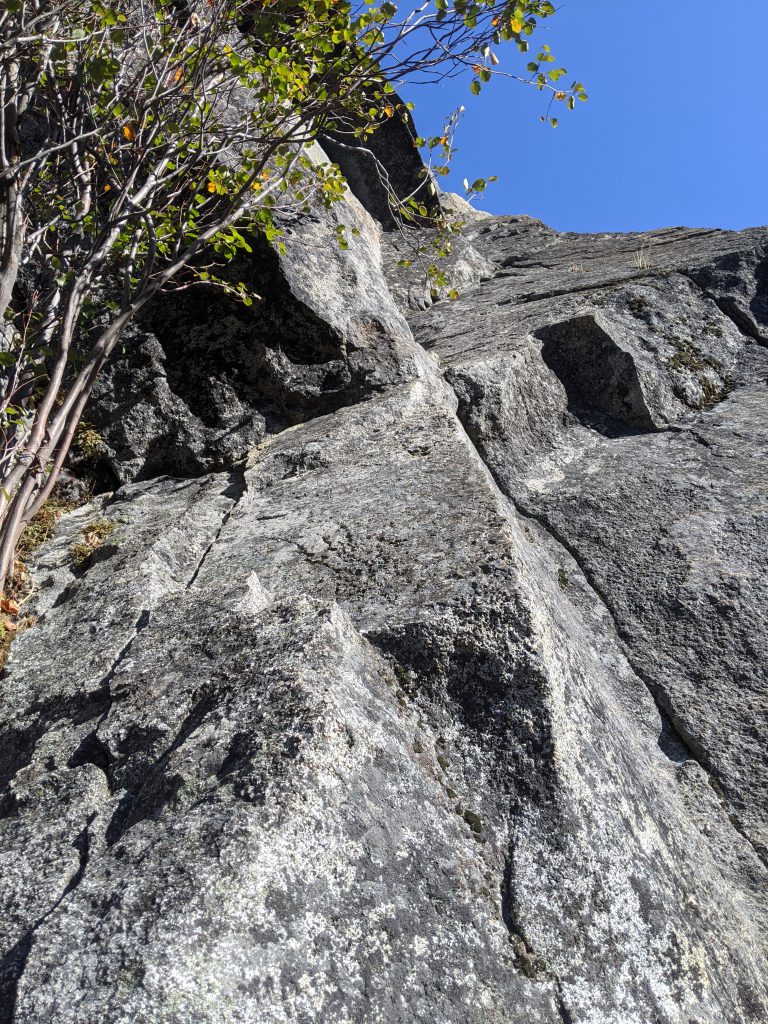
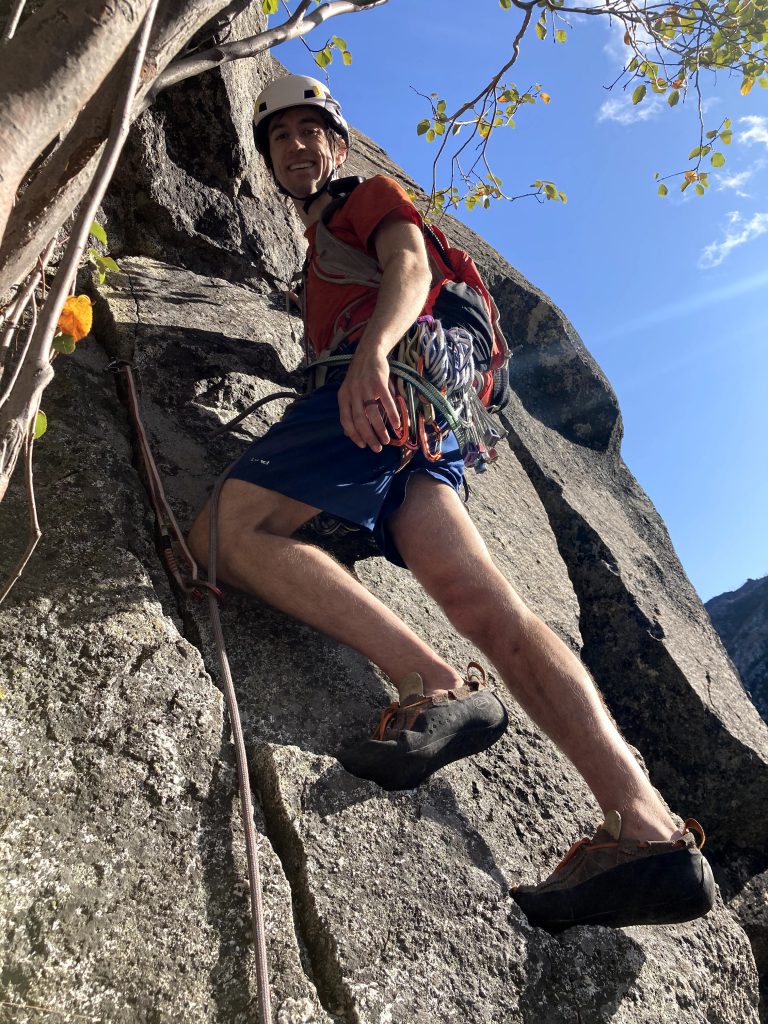
The start 
Looking back at the slab after stepping over to the right for a second time
The slab ends with a second step over to the right, and then the climbing gets a little less slabby. I followed the obvious path up to the dihedral, where I belayed from a slight ledge and built a gear anchor. I skipped the tiny old bolts.


Small slanting belay ledge 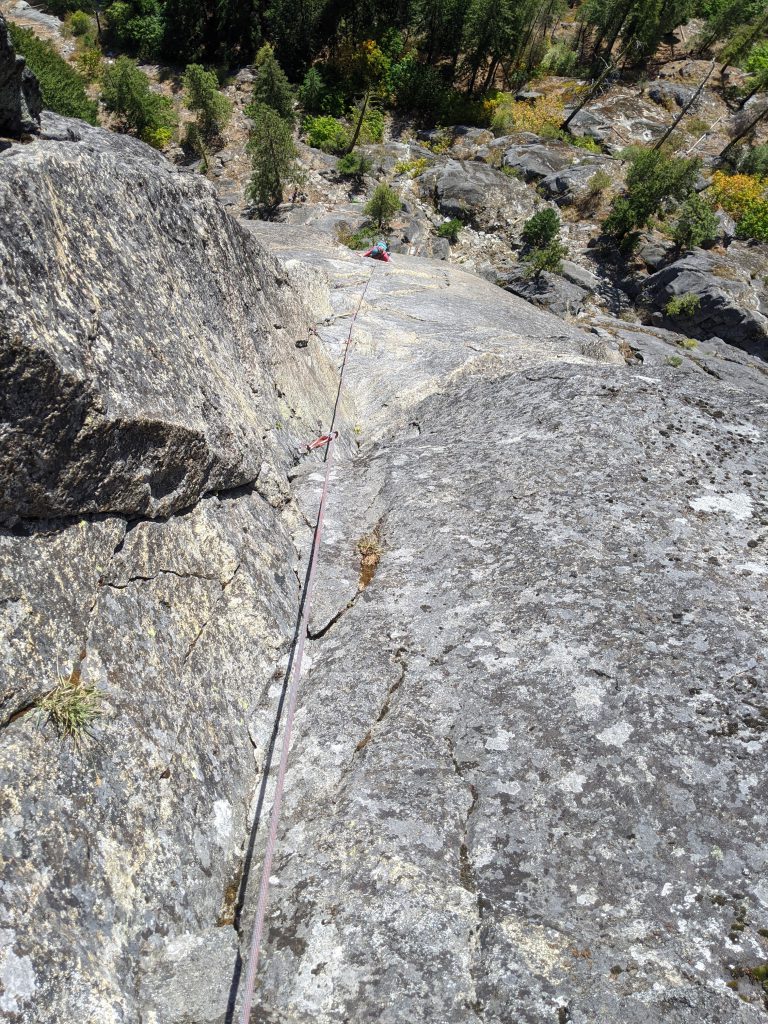
Pitch 4 – 100′
This pitch was a bit easier, protects similarly to last pitch. Slightly slabby but quite a few features, I kind of enjoyed this climbing. I ended on the big ledge under the big overhanging roof and slung a rock for belay.
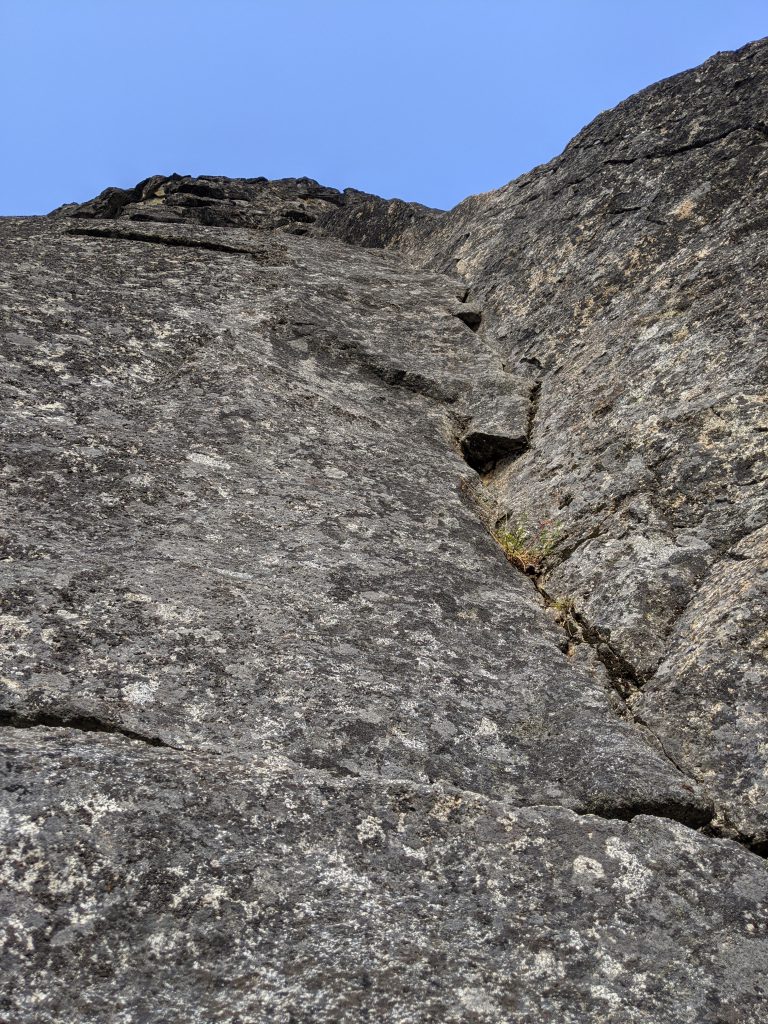
Pitch 5 – 180′
Easy pitch, the end was a ton of chickenheads so not the most protectable, but it’s super easy at the end and fun being able to cruise up the terrain! You first step around the corner…

And then you’re greeted by a sea of chickenheads. Cruise on up, and when you get to the big block roof, I went right and then belayed on some ledges around there.
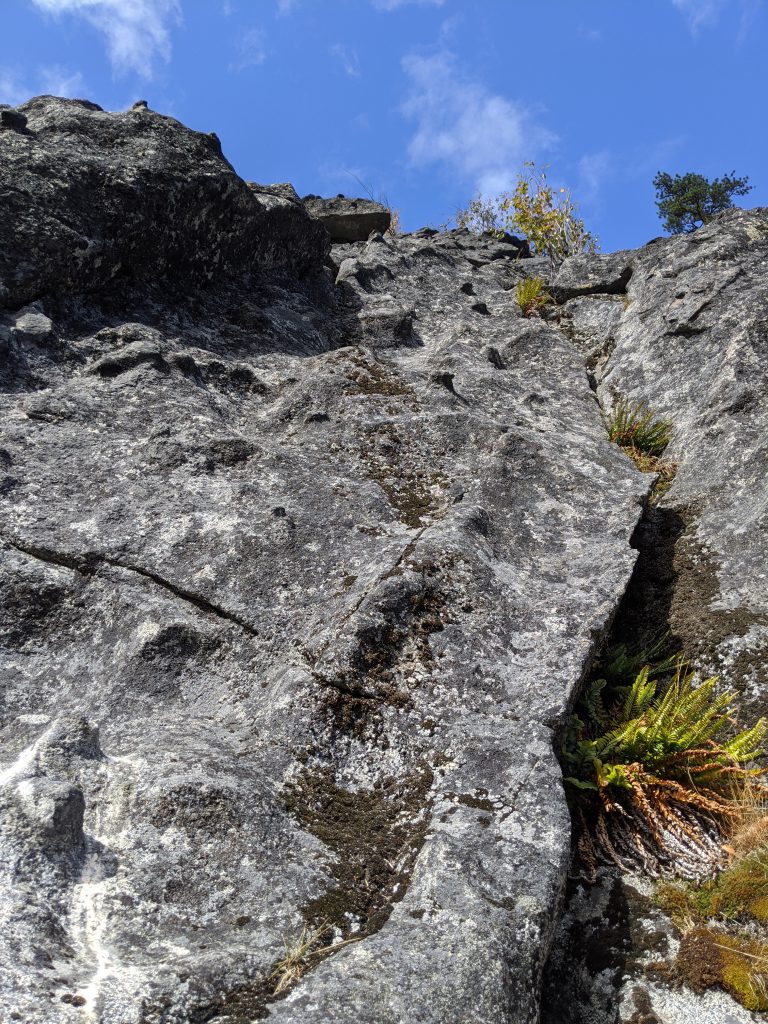

Further up, I went just right of this block 
Awesome views 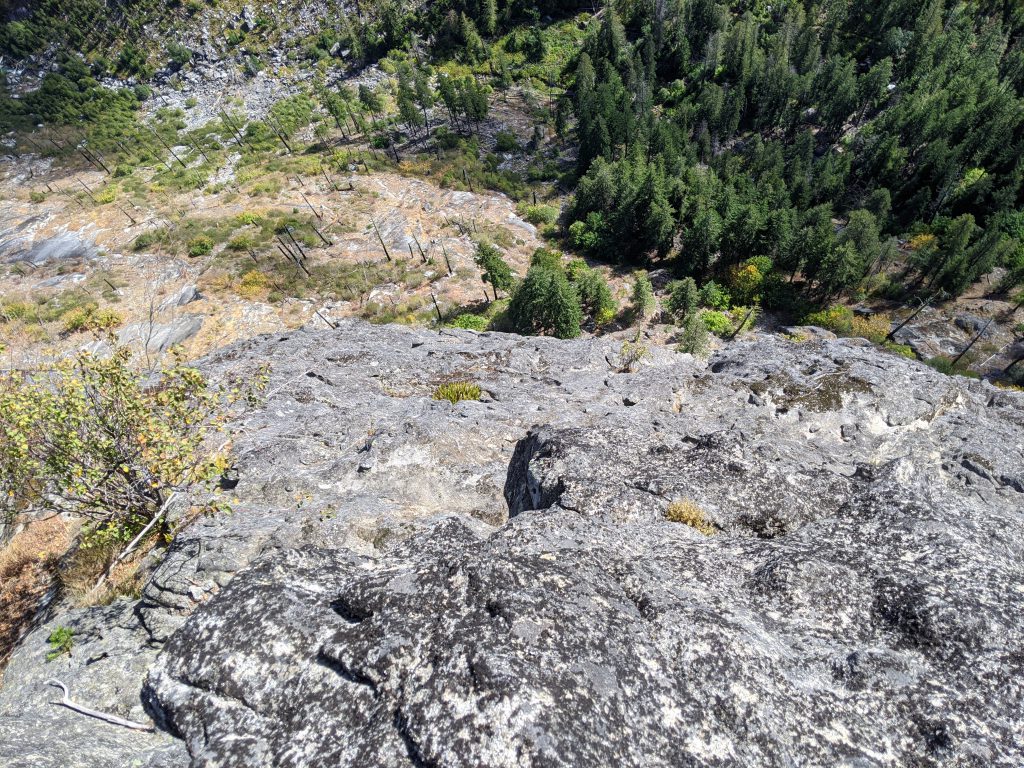
Looking down at the sea of chickenheads
Pitch 6 – 190′
I was a bit unsure on this one… I started up the easy 3rd/4th class ridge, but then there’s a junction point where you can either go left or right. I went left, there was one 5th class move that protects with a cam, and then after that walked further left and then up a ramp of class 3/4 chickenheads to the top.
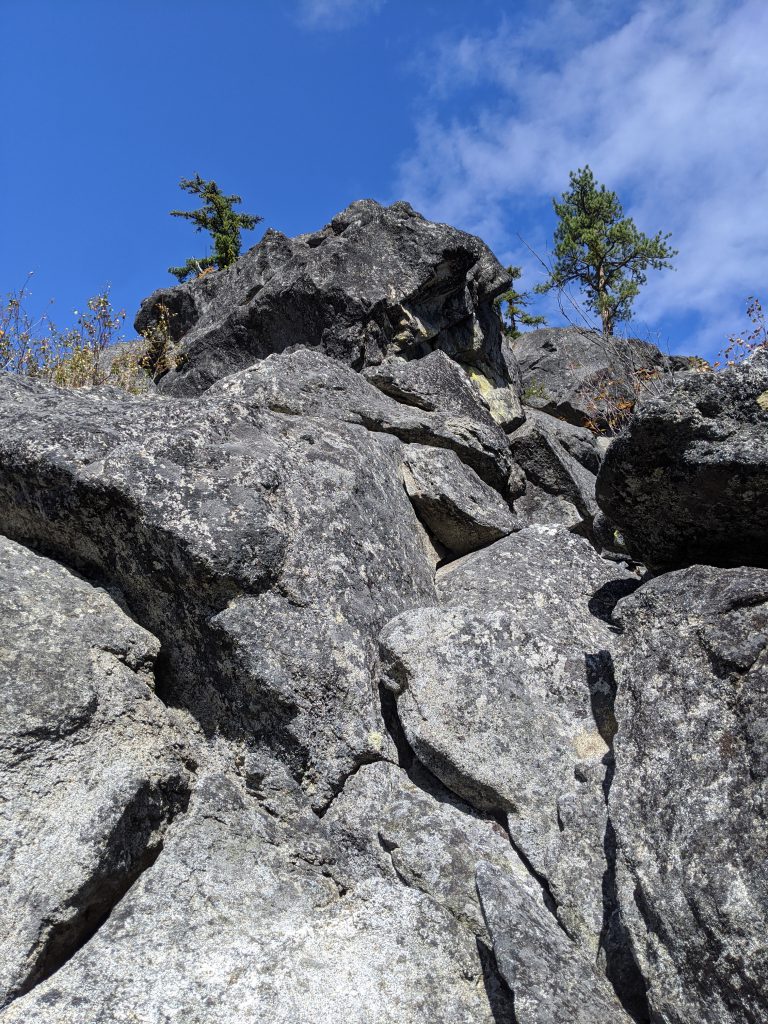
Top!
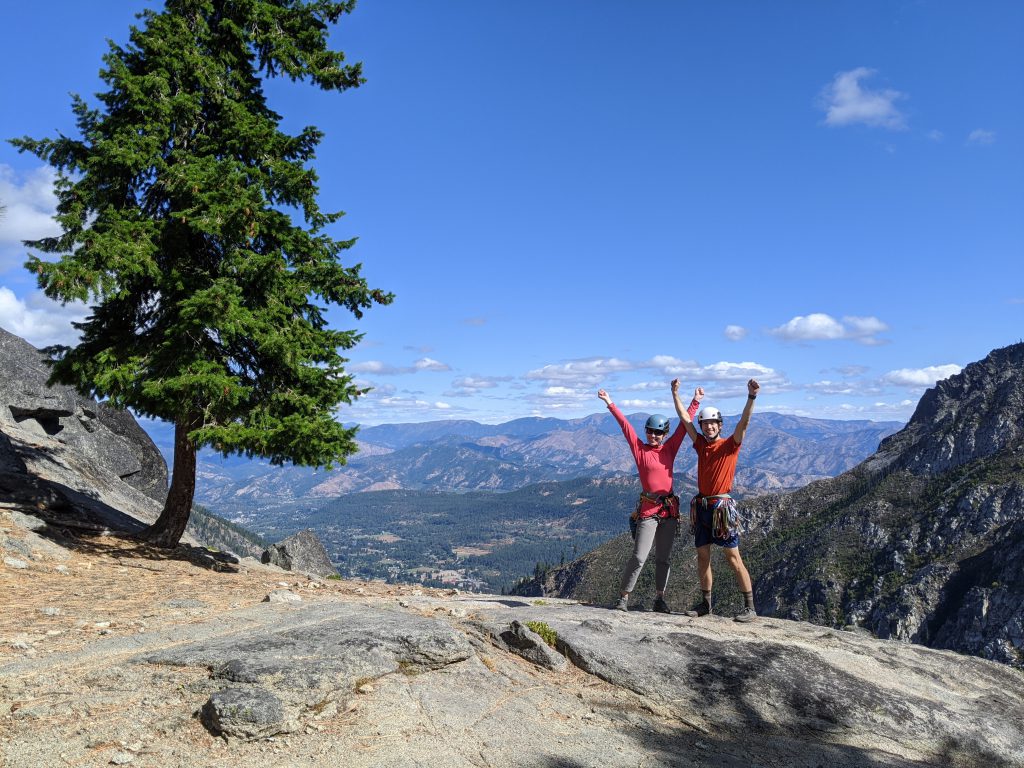
Descent
The descent felt better than last time, but the two slabby crossings were still intimidating. We also managed to downclimb instead of rappel early on the descent, but it was a tricky downclimb.
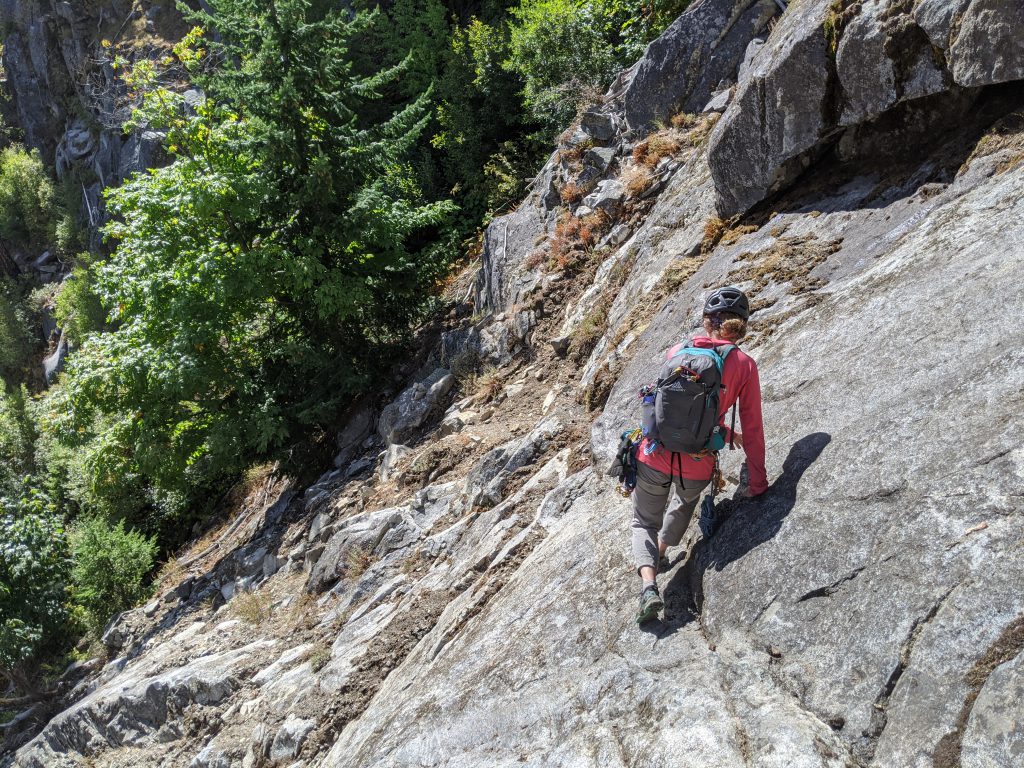
We still made it back to our packs in 1:15 hours, including some breaks for looking at the other climbers on the route.

